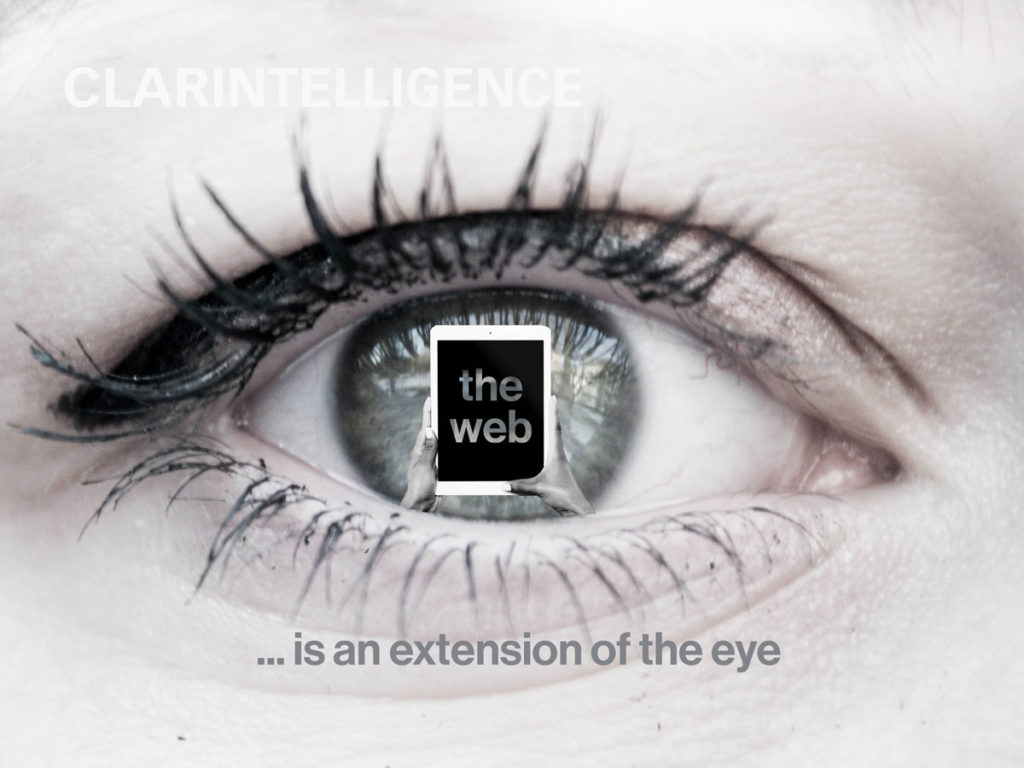
The Hypothesis
The billion dollar question for marketers and investors alike, where will we media-junkies spend our time and “what’s the next big platform?”
In short, I don’t know the answer.
However to estimate the potential of media formats, we can look at users’ activities and see who ‘hosts’ these activities. This provides us with some guidance as to who has the potential to ‘bundle’ these activities.
In its recent 2021 Technology Outlook, Activate has done exactly that. They have drilled down into one of the media categories and they came to conclude that gaming is the contender for the next big platform. And they do not stand alone with this conclusion.
Gaming itself is growing steadily. But it’s about more than gaming as a growing segment of user activities. Gaming is also an enabling technology that can host other non-game activities of users, letting games emerge into wider platforms.
As we just said, platforms emerge by ‘hosting’ and bundling popular activities of users. Facebook not only hosts our connections with friends, our messaging with them, our media consumption, it also hosts the marketing activities of most businesses, creating the reinforcing loop that enabled the company’s growth.
Activate quite enthusiastically sees gaming taking on a similar role, stating that “Similar to previous waves of digital technology (e.g. search, social, eCommerce, mobile, apps, messaging), gaming will fundamentally change how people interact with each other and the internet overall. Most digital activities (e.g. search, social, shopping, live events) will increasingly take place inside of games”
This hypothesis is shared by others.
Andreessen Horowitz calls games the “new mall (and the new sports bar)”, expecting games to be “the next social network”, building on the evidence that many people today use games to socialise without a goal to win and that concert with attendance of up to 11 million people have been carried out in games.
In TechCrunch, Taylor Hatmaker explains that “we need creative ways to feel present with other people” and that virtual worlds provide us with the tool to do this. She convincingly cites the example of the game “Animal Crossing”, where she had a wonderful and fun time visiting her younger sister’s island in the game. Animal Crossing also hosted its own in-game talkshow as well as a conference.
Yet, in particular tech people and analysts tend to get enthusiastic about tech driven opportunities. Do we share this enthusiasm?
Following the user activities
Let’s look at the users.
We indeed have seen many examples of new in-game activities of users this year.
In-game-events have increase significantly. The attendance of “LIVE IN-GAME CONCERTS” was the most popular in-game activity in 2020, followed by “Virtual re-creations of social/life events within games (e.g. birthday parties, weddings)” and “In-game movie and TV show previews” sharing the second place.
The examples even extend beyond the classic tech and gaming community. In its anti-censorship campaign “Truth Finds a Way”, Journalists Without Borders have successfully used the game Minecraft to ‘smuggle’ libraries of censored books into autocratic states. The game contained books with content produced by leading journalists.
These examples indeed to provide proof of concept that games are able to host other activities. But 2020 is not a normal year. Covid is an extraordinary effect.
In the first place, people have changed their behaviours because they had to, not because the new modes of activities are more convenient or joyful. Users have fled to games to compensate for the lack of opportunity of real life activity. Again, user behaviours do not follow what is technically possible, they follow a real need.
Therefore we will have to see what will remain after the pandemic.
Once that need that was created by the pandemic, that lack of direct social contact, becomes redundant we will have to see what remains.
Time Out Magazine might not necessarily have to include a “Fortnite” Section next to its Berlin or New York recommendations.
We will have to see what activities will remain virtual and which ones will come back to normal life.
Reframing the Question: ‘how’, not ‘whether’
But may be “what will remain” is the wrong question after all.
We tend to fall into the habit of viewing new formats, new media environments through the lens of our old tools. This habit keeps us from understanding what this new environment really is about.
May be we have to reframe the question. It’s not whether people will keep using these virtual tools, it’s more what for and how they will use them.
Every medium reconstitutes the dialogue.
TV has moved us from a continuous focused activity to an activity where we are immersed into shorter sequences of information.
Social Media has changed the dialogue to let us communicate in a few seconds, mainly through headlines in a kind of continuous messaging. Facebook never sleeps.
Instagram has enhanced our ability to communicate through visuals. It has also driven creatives to create shareable content quickly, to build leaner workflows and to experiment.
What they all have caused is an unbundling of content. We are provided with content in snippets, fitting our shorter attention spans, fitting the Facebook feed where one message is not related to the previous and fitting to short ads.
Also our activities have become more and more fragmented due to new technologies. 100 years ago we met our neighbours the same way every week. Today, you might have 5 different lines of communication with your friends, through messenger, email, public posts on social networks, and meeting for a beer in the evening. Each conversation has a different tone to it.
Similarly, from these new tools, new forms of dialogue will emerge. The tools are there now, people have started to get used to them, and they fill find new use cases.
The current use case, let’s call it “compensation for lack of direct social contact” will fall away. A game cannot replace the live concert, the real-life experience.
Once we can start visiting real life concerts, these new dialogues will most likely extend beyond how they are conducted today on these platforms.
But this extends beyond games. We have also moved conferences into the virtual space. Virtual conferences currently are booming. But once the hurdles for real conferences fall away, Zoom cannot replace their main value propositions. Real-life conferences provide us with motivation and inspiration for the tasks to come, and they enable us to build a personal network, personal dialogues. These personal dialogues form much stronger bonds than you can form in front of zoom screens. If we just want to get the knowledge we can watch a Youtube video, read a book, or listen to a podcast.
However none of this means that people will not keep using these new tools. New forms of dialogue will emerge. Those dialogues will be new use cases, that may be we explore during this pandemic.
These dialogues will neither be the old form of event, nor will they be the traditional form of game.
„Societies have always been shaped more by the nature of the medians which men communicate than by the content of the communication”
Marshal McLuhan
The type of dialogue
These new dialogues can have different forms.
May be they will be used primarily for long distance connections. May be they will be used for when we don’t have time to go to a full concert and want to enjoy a 30 minute snippet.
Most likely however, they will continue the pattern of unbundling of content that we have experienced. Most likely we can expect these formats to be shorter, more bite-sized snippets than the real-life events, because that is how our attention span works on the internet. They will cater to this fragmentation of our conversations.
Possibly real concerts will be extended into the virtual space repackaged and remixed for this new environment. Possibly our real-life conversations will extended through these new tools.
The type of platform
Onwards, from activities to hosts.
Possibly these hosting platforms will not be a game as we know it. The features will adapt to new use cases. It might not make sense to start playing a game if we just came for the concert experience.
IT’S NOT ABOUT THE GAME. IT’S ABOUT FINDING WAYS FOR PEOPLE TO CONNECT, AND GAMES PROVIDE THE TECHNICAL TOOLS
May be we should think of it in terms of blockchain technology, where bitcoin is just one use case. The game is the bitcoin, but game technology can have far wider applications, like the blockchain has.
May be we should take a step back from games and ask, for what reasons do people seek connection and experience online and how?
Next to games, other tools are similarly shaping our new interactions. We have talked about virtual conferences. Video streaming has taken on interactive and community elements that we usually find in games. Virtual watch parties have increased. Streaming services have added interactive titles that influence the story, like Charlie Brooker’s Black Mirror Bandersnatch. Fitness streaming services have taken our workout virtual.
All these will generate new forms of interactions, new forms of dialogue. Those who will win are not the ones with the best technological features but those who enable an engaging form of dialogue.
This is why we should think not in terms of games but in terms of use cases and enabling technologies.
As always, I leave you with reading recommendations.
Here you can find the Activate Technology Outlook 2021
Nicholas Carr’s “The Shallows” is a of our day and age. It explores how what he calls intellectual technologies shape our behaviours and our brains. If you have found the documentary “The Social Dilemma” insightful, then this book will take you a level deeper.
Have a look at McLuhan’s classic “The Medium is the Massage” if you don’t own it yet. The version illustrated by Quentin Fiore is a visual masterpiece of its time.
Taylor Hatmaker’s TechCrunch Article
A short Overview of Gaming Trends by Andressen Horrowitz



